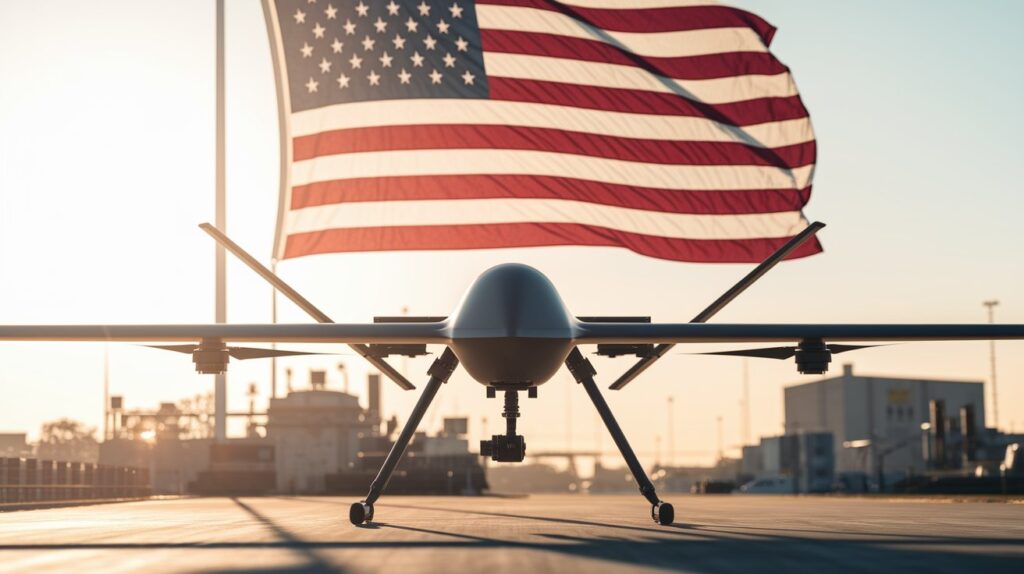As military drones become indispensable to modern warfare—providing unmatched capabilities in surveillance, strike operations, and logistics—U.S. trade policy has become a strategic force of its own. The tariffs imposed under the Trump administration, particularly targeting Chinese imports and defense-critical technologies, have left a lasting impact on the development, sourcing, and competitiveness of U.S. military drone programs.

This article explores the dual narrative of challenges and emerging opportunities brought about by these tariffs, and what they mean for the evolution of military drone technology through 2028.
Request US Tariff Impact Analysis Now @ https://www.marketsandmarkets.com/forms/ctaTariffImpact.asp?id=221577711
Tariff Challenges: Disruption Across the Drone Ecosystem
1. Component Supply Chain Volatility
One of the most immediate effects of the tariffs was the cost inflation and delayed availability of critical drone components, including:
- Lithium-ion batteries
- Electronic speed controllers (ESCs)
- Sensors and optics
- Composites and light metals
Many of these were sourced from China, which had been a dominant player in global drone hardware manufacturing. As tariffs raised prices by up to 25%, U.S. defense contractors were forced to pivot away from established suppliers, leading to delays and cost overruns in both large and small drone programs.
2. R&D Setbacks and Reallocation
The sudden cost increase in hardware procurement redirected budgets from R&D to sourcing and compliance, slowing innovation in AI-driven autonomy, swarm coordination, and edge computing.
In some cases, R&D projects were paused or restructured to meet new “Buy American” sourcing guidelines, leading to a short-term innovation bottleneck.
3. Interruption of Global Partnerships
Tariff tensions complicated joint development programs with allied nations, particularly where non-U.S. suppliers were also affected by retaliatory tariffs or uncertain regulatory paths. This created friction in global drone interoperability and shared mission capabilities.
Opportunities: Rebuilding the Defense Tech Base
Despite the disruptions, the tariffs catalyzed a rethinking of U.S. drone manufacturing and defense technology policy. Several long-term opportunities have emerged:
1. Strengthening the Domestic Drone Industry
The tariff era prompted a renewed push to reshore critical drone technologies. Key outcomes include:
- The launch of the Blue UAS program, supporting trusted, American-made drone platforms.
- Funding through DIU (Defense Innovation Unit) and AFWERX to scale domestic drone startups.
- Rising presence of companies like Skydio, Anduril, and Shield AI in military drone contracts.
This has positioned the U.S. to lead in autonomous drone development while securing its defense industrial base.
2. Diversifying Global Supply Chains
To avoid future geopolitical bottlenecks, U.S. defense procurement has expanded its sourcing to allies such as:
- South Korea and Japan for advanced batteries and electronics.
- Israel and NATO partners for ISR and targeting systems.
- India and Mexico for low-cost manufacturing partnerships.
This diversification enhances resilience and supports redundancy in critical systems—vital in times of global conflict or disruption.
3. Accelerating Autonomy and Software-Centric Approaches
As hardware costs spiked, focus shifted to software-driven performance gains. The U.S. military increased investments in:
- Autonomous mission execution
- AI-based threat recognition
- Secure communications and data encryption
These software-led innovations promise to future-proof drone platforms and reduce reliance on tariff-exposed physical components.
Key Trends to Watch Through 2028
- Hybrid Propulsion Innovation: Combining battery and fuel technologies to extend range and mission flexibility.
- Modular Drone Architectures: Allowing rapid hardware swaps to accommodate varying supply chains and missions.
- AI-Powered ISR Expansion: Enhanced image processing and decision-making at the edge.
- Military-Commercial Convergence: Defense contractors collaborating with commercial drone firms to accelerate development and reduce costs.
Future Outlook: A Pivotal Policy Turning Point
The Trump-era tariffs marked a turning point in U.S. defense technology strategy, particularly for military drones. While the initial impact brought higher costs and operational hurdles, it also opened the door to a more resilient, innovative, and sovereign military drone ecosystem.
Looking ahead to 2028, the U.S. is poised not only to recover from these trade shocks but to emerge stronger—leading the next wave of drone warfare technologies grounded in secure supply chains, smart systems, and strategic global partnerships.